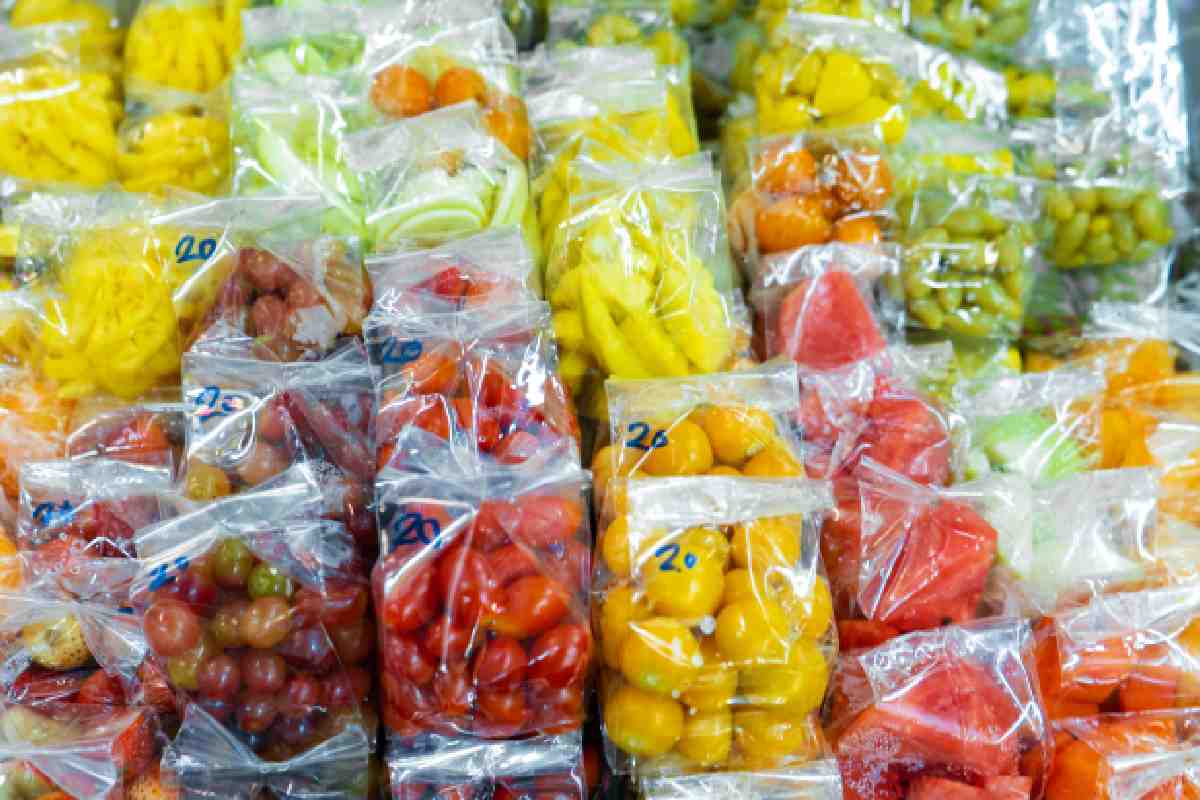Most of the plastic made around the world ends up in food and drink packaging. But over time, this plastic breaks down into super small bits called microplastics. In this easy guide, we’ll look at what microplastics are, how they get into our food, possible dangers, and simple ways to cut down on them.
Back in 2016, the world made about 322 million tons of plastic. A big chunk—around 40%—went to food and drink packaging. These plastics have added stuff like stabilizers (to keep them steady), lubricants (to make them smooth), fillers (to bulk them up), and plasticizers (to make them bendy).
Table of Contents
What Are Microplastics in Food?
Microplastics in food come from two main places: chemicals that companies add on purpose, like fillers and stabilizers, and extras that build up by accident, like dirt or leftovers. Some common ones show up in our meals:
- Bisphenol A (BPA): This makes plastics like PVC strong and clear. It’s in lots of cans and bottles.
- Dioxins: These are unwanted leftovers from making weed killers or whitening paper. They sneak into the air and water, then into food.
- Phthalates: They make plastics soft, see-through, and tough. You’ll find them in bags, wraps, and containers.
Other plastics like polyethylene and polypropylene are super common in packaging because they’re light and strong. Tiny bits of BPA and similar chemicals can also slip into food in small amounts.
Why Are Microplastics a Problem?
Microplastics are the broken-down pieces of those added chemicals that make plastic look good and work well, like being clear or flexible. But many of these bits are seen as poisonous by experts because they can hurt our health. Things like heat from microwaves or sunlight make plastic split into these tiny pieces, which then jump into food.
Stuff like single-use water bottles, takeout boxes, canned food, and plastic wraps all have microplastics. Heating food in plastic, storing it too long, or using certain types of plastic makes more of these bits leak in.
How Do Microplastics Affect People?
We don’t fully know yet if microplastics hurt humans or exactly how. Plus, plastics often have other stuff like flavors, so we need to study those too before jumping to big answers.
The European Food Safety Authority (EFSA) says we need way more info on what happens to microplastics inside our bodies to check real health risks. They want scientists to keep studying and use the same tools so we can compare results and get a clearer picture. Early signs link them to swelling in the body, high blood sugar, trouble with insulin, type 2 diabetes, and heart problems.
Where Are Microplastics Hiding in Food?
We don’t have all the facts yet, but studies have spotted microplastics in lots of foods. Here are some big ones:
| Food Type | Examples Found |
|---|---|
| Seafood | Fish, shrimp, clams |
| Salt | Table salt |
| Drinks | Beer |
| Sweets | Honey, sugar |
| Water | Bottled or tap |
Microplastics also get into dirt from thrown-away bags or farm tools. This might mean veggies grown in that soil pick them up too. We need more learning to know for sure.
Do We Get Microplastics from Drinking Water?
Yes, studies show microplastics in tap water, bottled water, and even rivers or lakes. But the amount changes a lot depending on where the water comes from. One study found way more in bottled water (about 325 bits per liter) than tap (just 5 or 6). Scientists are getting better at testing, which will help us figure out real risks to our health.
Wrapping It Up: What Can You Do?
Microplastics are those tiny bits from plastic helpers like stabilizers and plasticizers that make stuff clear, strong, and bendy. Swallowing them might lead to body swelling, blood sugar issues, insulin problems, type 2 diabetes, and heart trouble.
Food is a main way we get exposed, but you can fight back with easy steps:
- Eat fewer super-processed foods like fast food or canned stuff—go for fresh fruits, veggies, and home-cooked meals.
- Pick eco-friendly packaging, like paper or cardboard instead of plastic.
- Switch to glass or metal water bottles instead of plastic ones.
- Avoid heating food in plastic—use glass or ceramic in the microwave.
- Wash your fruits and veggies well to rinse off any extras.
These small changes can help keep those tiny plastics out of your body. Scientists are still learning, but starting now makes a difference for your health!

